Shadow Drawings
Today, with a few simple supplies from our homes and the help of the sun, we’re going to use light and shadows to create an otherworldly drawing. Grab your supplies and head outside with us to capture the magical, rippling effect of light passing through water and the different silhouettes it casts.
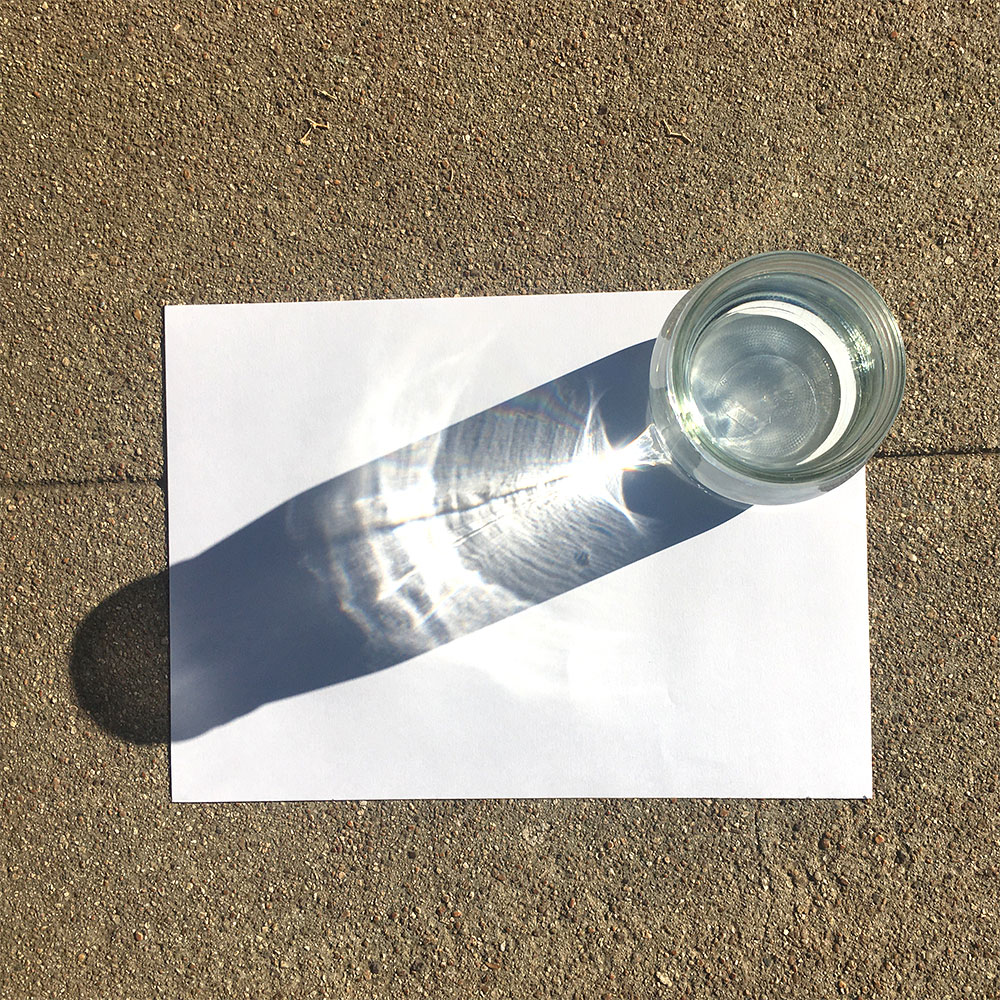
Things you will need
- A clear, sunny, flat area with enough room for a piece of paper and jar
- One piece of white or light-colored paper
- A drawing utensil; pencil or colored pencils work best
- A large glass jar
- Enough water to fill the jar
- Note: This project works best when done earlier in the morning or later afternoon, when the sun’s location in the sky creates a long shadow.
Make it!
Start by finding a flat, sunny space outside to lay down your drawing paper. When you’re searching for a space, look at the objects around you to see where their shadows are falling. Are the shadows behind the objects or in front of them? This will help you figure out where to set up. Check to make sure there are no shadows already cast on your paper from the objects around you — or you could add those shadows to your drawing!

Once you’ve placed your paper in the sunny spot, get your other materials ready. Take your jar and fill it with water, leaving about two fingers’ width of space at the top (be careful not to overfill it so water doesn’t spill onto your paper.)
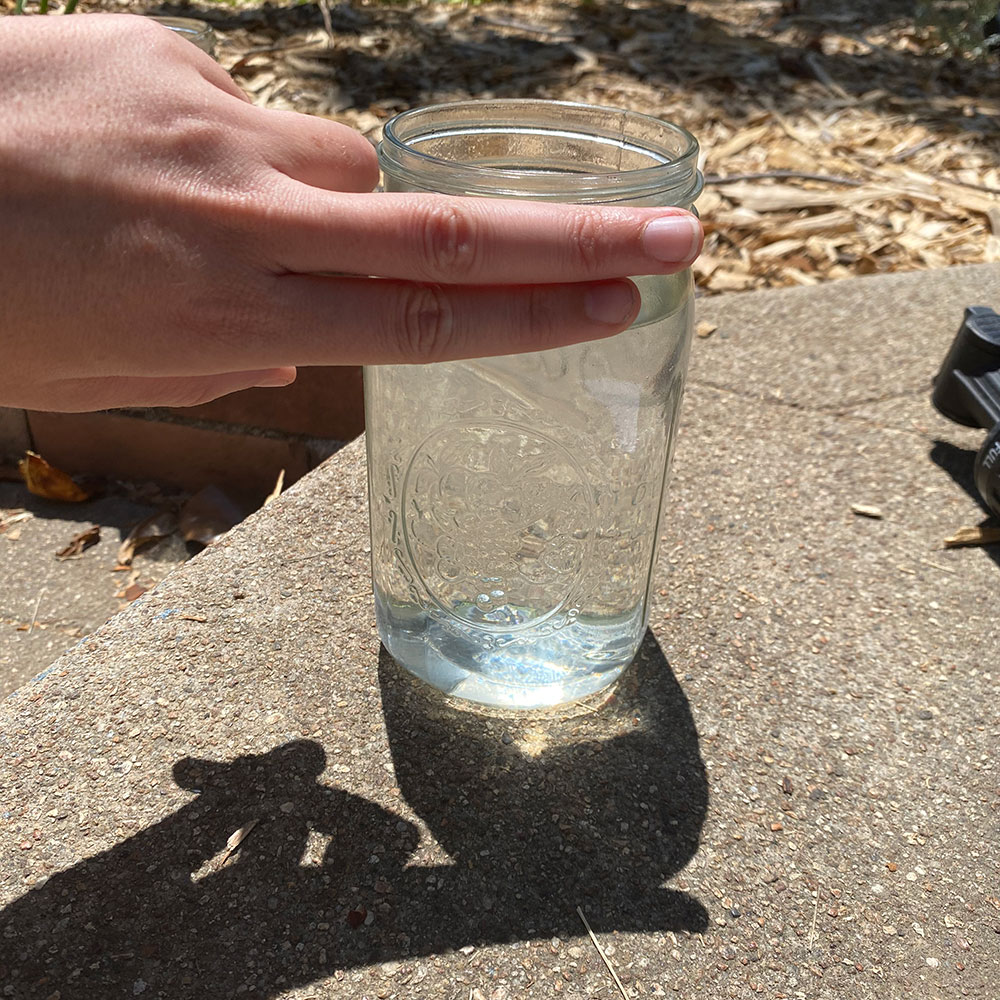
Remember when we checked to see where the shadows were around us? Use that information to decide where to place the jar so it casts a shadow onto your paper. The shadow is made by light passing through the water — darker in some places and lighter in others. You can move your paper or your jar to create whatever shapes and shadows you like. Once you have settled on your placement, set the jar down so you can begin to trace the silhouettes the water casts.
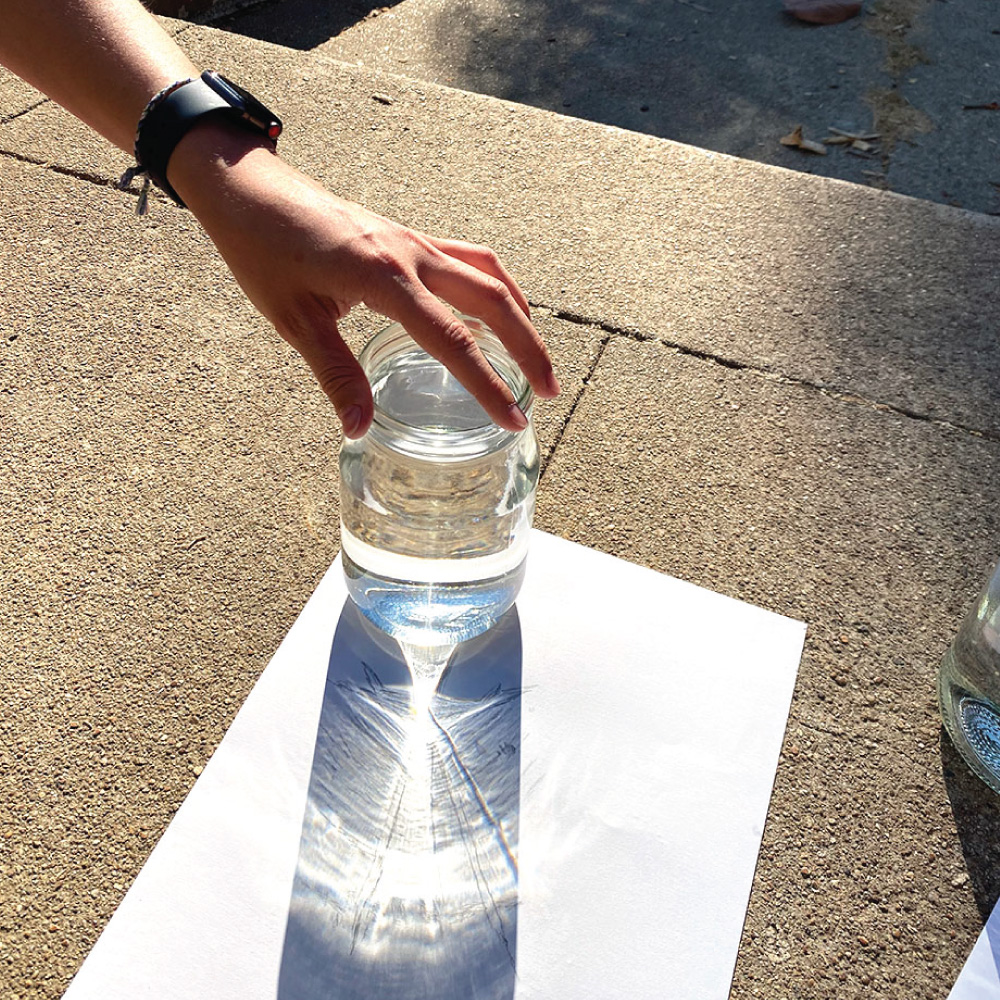
Pick up your pencil and look for the most visible lines to trace. Begin tracing, shading or rendering your shapes however you’d like. You can even use colored pencils to add color to the drawing.
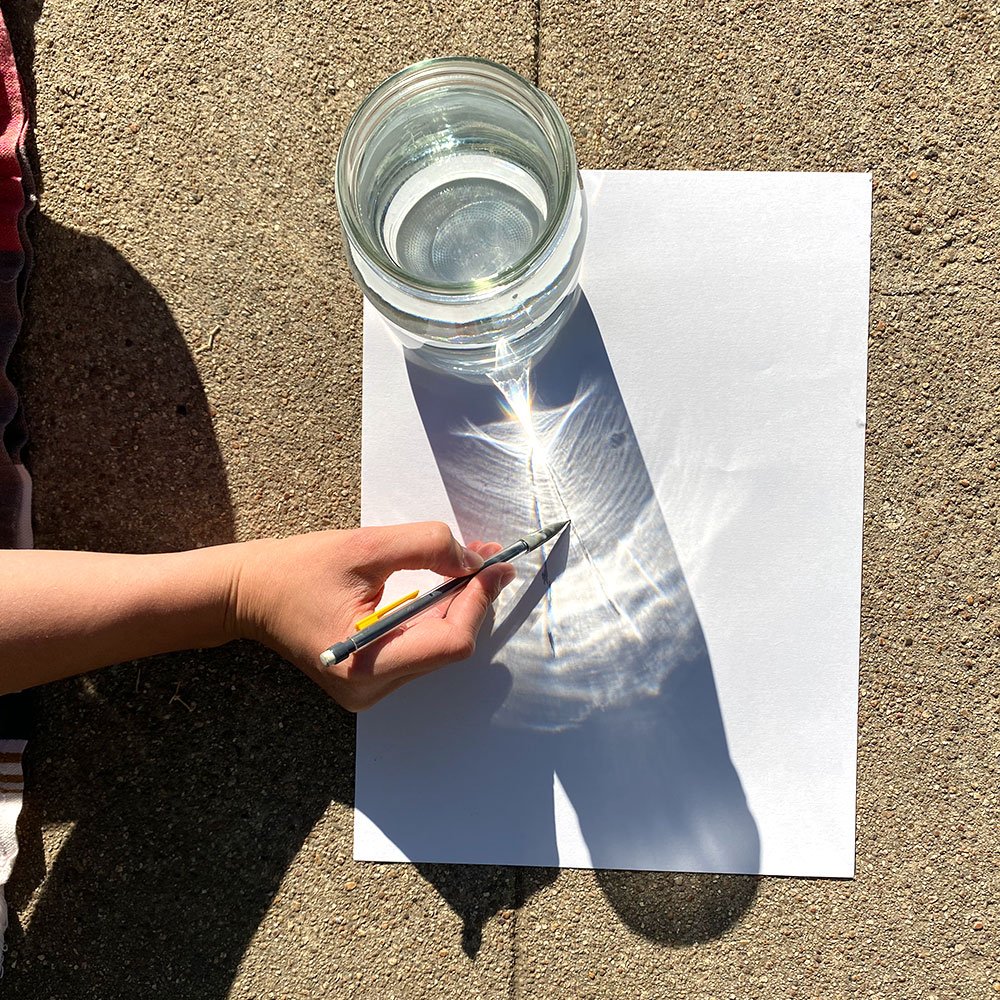
While drawing, you can move the jar or paper to change the light and create new shapes to trace. Use your creativity to experiment and add to your drawing in any way you choose.
When finished, remove your jar, take a step back and marvel at your drawing. Look at the individual lines or rays of light you traced, and the shapes and patterns that have appeared. Sometimes when tracing, it’s hard to see the whole picture and, much like how light looks after passing through water, we end up with something totally unexpected!
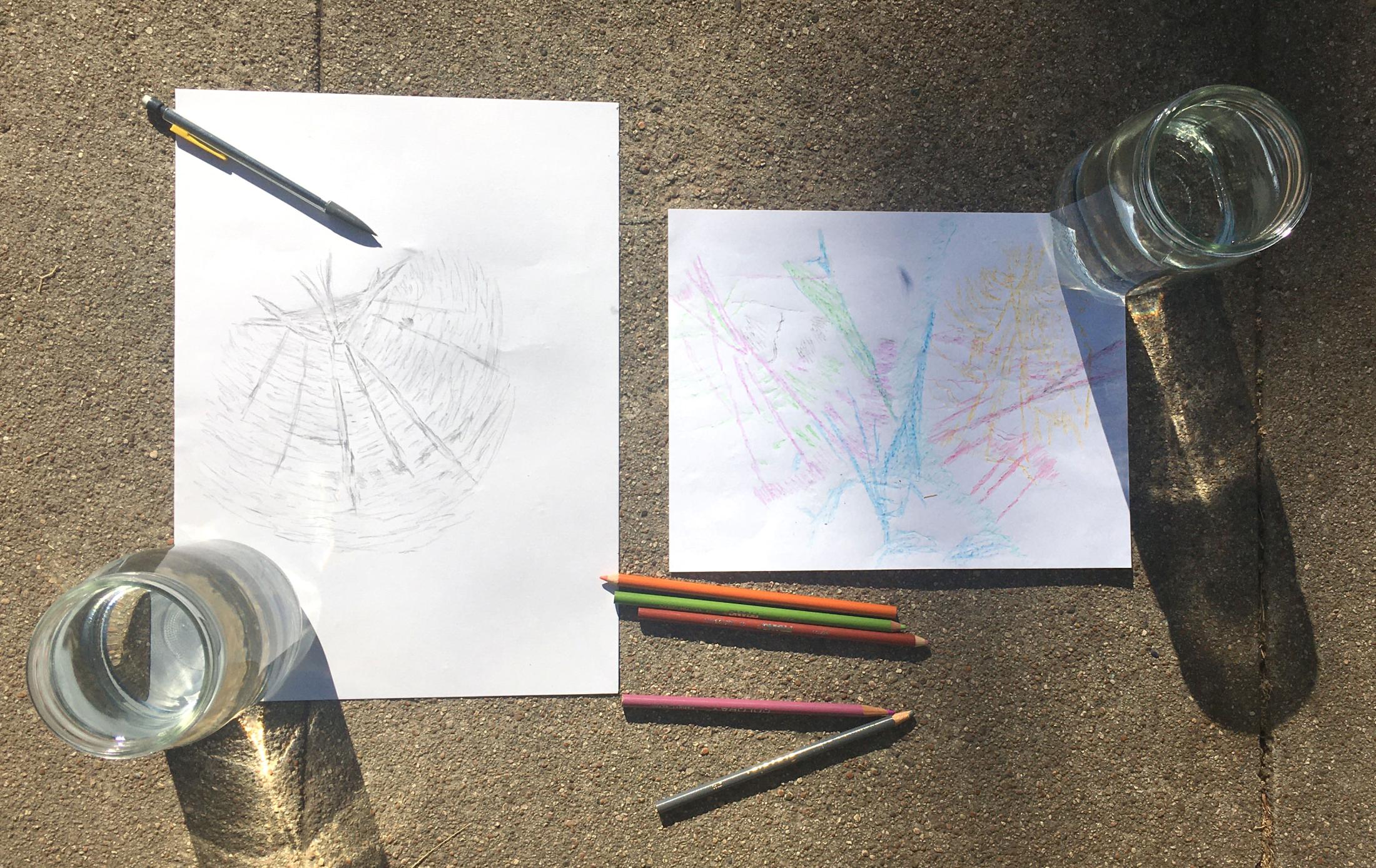
Questions to experiment with
- What happens to the light when you change the level of water in the jar? What happens when you add ice cubes to the water? What about salt?
- Did you find yourself drawing more of the shadowy figures that were cast or were you more focused on the bright light refractions on your paper?
- Try the art project at different times throughout the day. What happens to the light and shadows as the sun moves through the sky?
- What are other ways you can use light and shadow to make art? How would you capture your own shadow?
